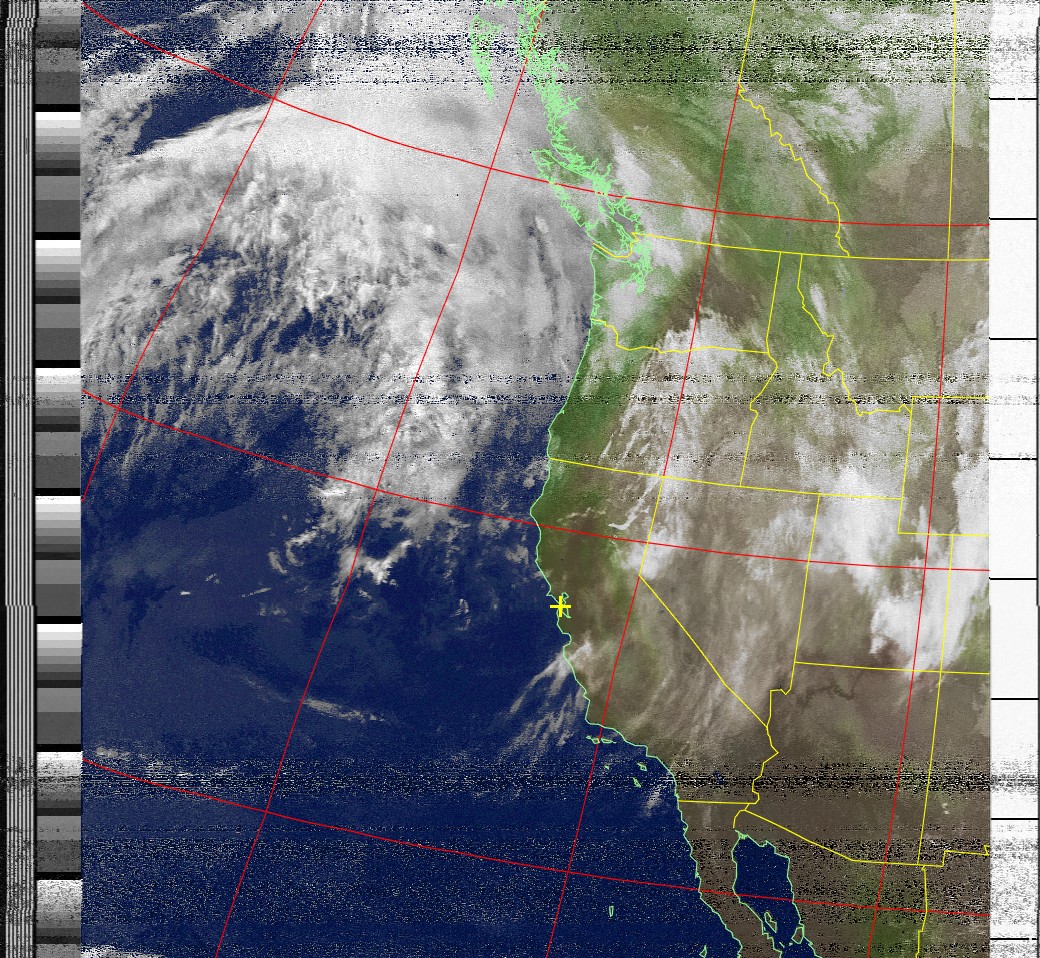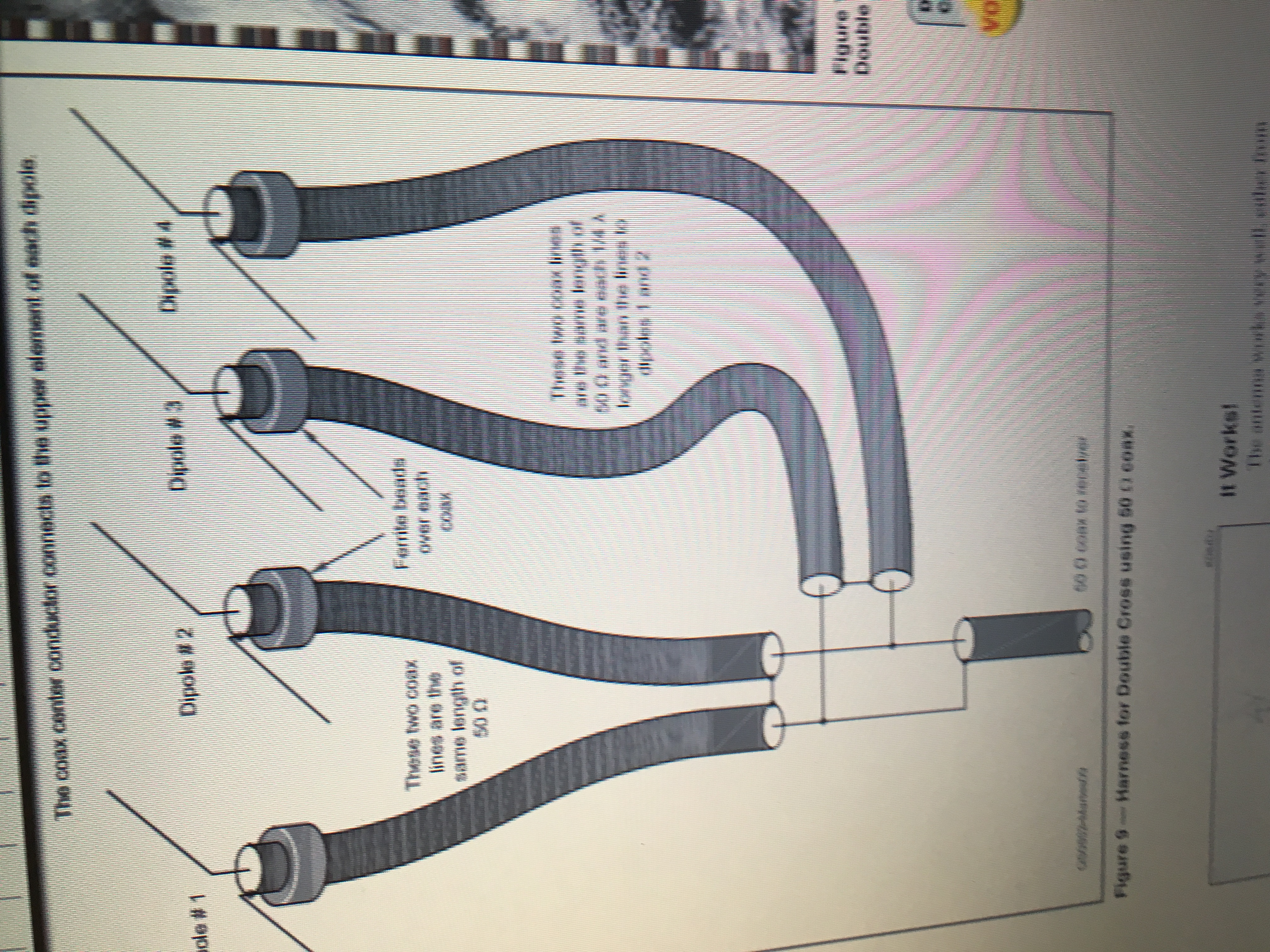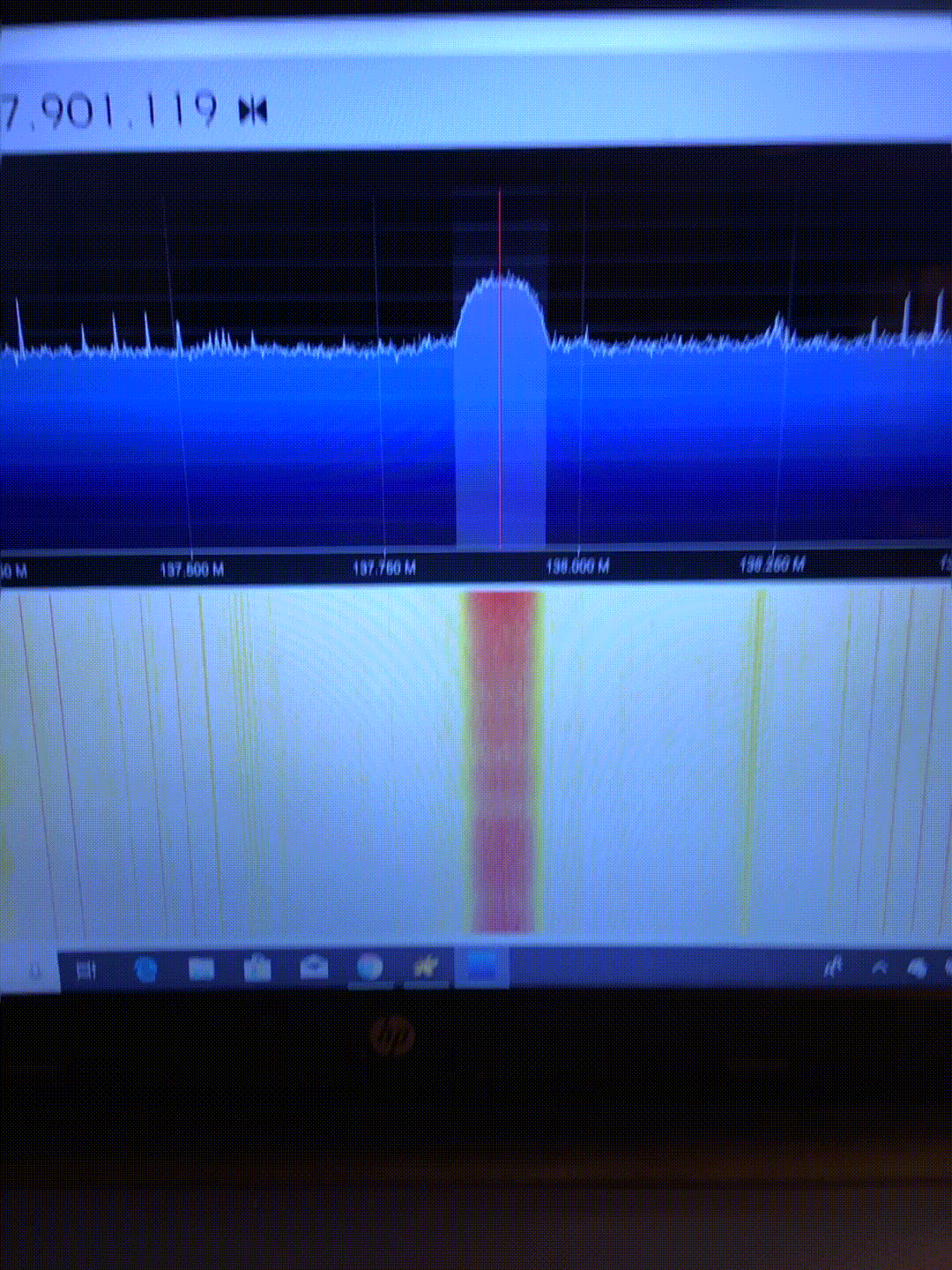Weather Satellite Imagery
October 2018

Images downloaded from satellites in orbit using DIY antennas.
As a freshman in high school, I realized that I had the ability to create more complex projects than I had in the past. I was browsing YouTube when I stumbled upon this video by the Thought Emporium (incredible channel by the way, in case you haven't heard of it). In the video, Justin Atkin showcased how he and some colleagues were able to pull images off of old 1960's NOAA weather satellites.
It turns out, these satellites are permanently transmitting an analog signal of an image of earth directly below them. Simple antenna designs are able to pick up this signal, and free software can transcribe the data into an image.
The video recommends using a device called an RTL-SDR, or a "Software Defined Radio", which is essentially a radio receiver that can plug into your computer.

The kit came with the hardware to make a V-Dipole antenna, capable of receiving the old analog NOAA signals. With this kit, I was able to receive this image from the NOAA 15 satellite.

Note that it is not actually a color image, but rather a black and white image of basically just the clouds. There is attitude data encoded in the image and the software can interpret that to put faux land/ocean coloring, as well as the lat/lon lines and states borders.
There is better free imaging capability out there, however. The Russian Meteor-M-2 satellite is a much newer satellite that take real color images and transmits them via a digital signal. However, you need a much better reception to lock into this signal and be able to decode it.
I began building a new antenna as recommended by The Thought Emporium. The plan was to build a DCA or Double Cross Antenna.

One of the interesting challenges that had me very curious was how the lengths of each coax cable inside mattered. Due to the way the circularly polarized signal is received, some of the signal is out of phase, and can be put back in phase by increasing the length of the cable it must travel.
Luckily there was a very helpful diagram online of how to cut these lengths.

When my antenna was fully built (unfortunately I do not have any images of it, and it has since been scrapped for years), I was able to capture some full color images from the Meteor satellite! My most proud image is that on the cover of this post.
Not too long after all this, my family went on a cruise through the Panama Canal. I brought my RTL-SDR and foldable dipole, and put it out when I knew Meteor was going overhead, somewhere between Cuba and Panama. While the signal recorded could not be decoded, I do have this short video of the signal being received.

This project introduced me to the incredibly complex and utterly magical world of RF. Years later, I still have my RTL-SDR with me at college, with hopes to build a more robust DCA and take higher quality images.